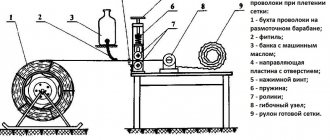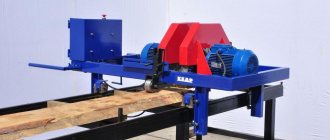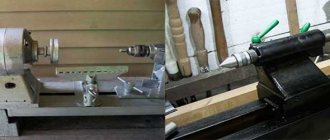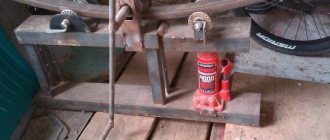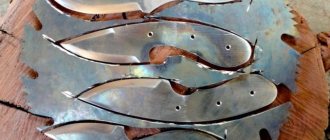Omsa socks set
349 ₽ More details
Omsa socks set
349 ₽ More details
Axial fittings for XLPE
Chain-link is a woven metal mesh with cells in the form of rectangles or diamonds. It is widely used for the manufacture of fences or enclosures. The main advantages of the material are low price, ease of installation, and structural strength.
A machine for chain-link mesh can be easily purchased, but some craftsmen prefer to make the equipment with their own hands.
A machine for making chain-link mesh will help us reduce costs during mass production
Types of machines for making mesh
The equipment used for the production of chain-link mesh varies in the degree of mechanization of manual labor. Among them are:
- Manual machines. The mesh is made with a manual drive, the spirals are engaged manually.
- Semi-automatic machines. Wire feeding and spiral engagement are automated.
- Automatic installations. The operator is not involved in the process.
Machines for the production of different types of chain-link differ several times in price and productivity.
Choosing an organizational form and other legal issues
To open a mini-workshop, the optimal organizational form is an individual entrepreneur (IP). OKVED 28.73 – “Production of wire products.” But the choice of taxation system depends on your target audience of buyers. If the end consumer is private individuals, it will be most beneficial to choose a simplified taxation system. Enterprises prefer to cooperate with legal entities or individual entrepreneurs who pay VAT.
For the business plan, we will take into account taxation according to the simplified tax system – 15%. The tax base is income minus expenses (of course, all financial transactions for calculating taxes must be documented and correctly executed).
The production of chain-link mesh is regulated by GOST 5336-80. According to current legislation, manufacturers are not required to confirm the quality of their products with an appropriate certificate. But in practice, passing voluntary certification and complying with GOST requirements during production significantly increases the chances of running a successful business.
Manual machines
Such equipment is manually driven and intended for private use. It is compact, the occupied area does not exceed three square meters. The spirals are wound and braided by hand.
Manual machine for the production of chain-link mesh
The main components of the machine for the production of chain-link mesh:
- Bed. It is a strong spatial supporting frame on which all other components are mounted.
- Screw. The main working body carries out winding of spirals.
- Drive lever with gearbox
- Guide roller system.
The installation allows you to wind spirals from wire from one and a half to 6 millimeters in diameter, the cell size is from 3 to 6 centimeters. Each cell size requires a specially manufactured auger.
Productivity reaches 50 meters of mesh netting per shift, provided that an experienced craftsman works. The machine is not intended for commercial scale mesh production due to low productivity and limited service life. But it will be quite possible to make a fence around a household or pasture.
The device of a manual machine for the production of chain-link mesh
Among the devices offered for sale, the BMP brand mesh machine should be noted. It is distinguished by its simple design, high fault tolerance, and the absence of special requirements for operator skills.
Calculation of a business plan for the production of chain-link mesh
To calculate the profitability of a business, let’s take as a finished product the most popular mesh for fencing with cell dimensions of 55*55 mm, made of galvanized wire 1.6 mm thick.
Revenue part
Machine productivity (for cell size – 55 mm) – 48 m2/hour. With single-shift work and 22 working days per month, production volumes will be: 48 m2 * 8 hours * 22 days = 8448 m2/month.
The standard mesh roll dimensions are 15 m2 (10 m long, 1.5 m wide). That is, the monthly production volume from one machine will be 563 rolls.
Selling price:
- retail – 650 rub./roll (30% of sales),
- wholesale – 450 rub./roll (70% of sales).
Total income: (169 roll * 650 rub.) + (394 * 450) = 287,150 rub./month.
Cost calculation
The raw material for the production of chain-link mesh is low-carbon wire (according to GOST 3282-74) without coating, galvanized or with a colored decorative polymer coating.
The price per ton of galvanized low-carbon wire with a tensile strength of 560-900 N/mm2 and a diameter of 1.6 mm is 37,000 rubles.
Wire consumption per 1 m2 of chain-link mesh is calculated by the formula: Weight (kg) = (13.40 * D2 /A, where 13.40 kg/mm is a constant coefficient; D - wire diameter in mm; A - cell diameter in mm .
According to this formula, the wire consumption for a chain-link mesh with a mesh size of 55 mm will be equal to: (13.40 * 1.6²) / 55 = 0.62 kg.
Cost of a roll (based on the wire spent) = (weight of wire * number of m2 per roll * cost of mesh) = 0.62 kg * 15 m2 * 37 rubles = 344.10 rubles.
Cost of 563 rolls (productivity per month) = 193,728.30 rubles.
Expenditure part
To accurately calculate expenses, from the difference between the profit from sales and the cost of production, you need to subtract the wage fund for hired workers, utilities, electricity, rent and other costs, which are calculated individually, based on tariffs, prices and agreements in each specific situation and for a specific area.
Approximate calculation algorithm:
Salary (1 operator, 1 sales manager) – 32,000 rubles/month,
Salary taxes – 14,400 rubles/month,
Rent of a mini-workshop 30 m2 – 10,000 rubles/month,
Electricity (with machine consumption 1.5 kW/hour) – (1.5 kW/hour * 176 hours) * 4 rubles/hour = 1056 rubles/month,
Other utility bills (heating, garbage removal, water) – 2000 rubles/month.
Income tax (USN) – (287,150.00 – 193,728.30 – 59,456.00) * 15% = 5094.86 rubles/month.
Total expenses: 64,550.86 rubles/month.
Semi-automatic machines
Such machines for the production of chain-link mesh are stationary; they have large weight, dimensions and productivity.
To place them you will need at least 10 square meters and a constant power supply. The main working parts of this device are the same as those of a manual one. The following operations are mechanized:
- wire feed;
- wire cutting;
- weave of mesh fabric.
The operator threads the wire and engages the spirals during weaving. The operator also has to roll the fabric into rolls.
Semi-automatic machine
Such equipment provides sufficient throughput to make commercial mesh production worthwhile on a small to medium scale. Due to the constant bending force and scrolling speed, the quality of the final product is significantly higher than with manual production. One machine is capable of producing 120-150 linear meters of chain-link per shift.
Among the models on sale, the PSR-2 machine stands out. It is capable of working with wire from 1 to 3 millimeters and forms cells from 2 to 6 centimeters. The width of the produced canvas is up to 2 meters. A durable welded frame made of metal profile provides good support and does not require additional fastening to the floor.
Best models
The rating of the machines showed that among all the variety, three models especially stand out.
ACP15/2
In first place is the ACP15/2 machine, characterized by simple settings and controls. He produces chain-link mesh in small quantities. Due to the low noise level, any location is suitable for installation, even near residential buildings. Without an operator, the unit is capable of independently bending the ends of the mesh, winding the fabric, cutting and stopping. As for all other processes, they are performed by humans. At the exit from the machine, a mesh with a cell of 18-50 mm and a height of 2-3 meters is obtained. For knitting, wire in one thread is used. Moreover, it may have a polymer coating or be unevenly rigid.
The advantages of the device include a gearmotor as a single unit, as well as an improved cooling system due to an emulsion pump. The guide bushings serve for a very long time and without failures, as they are coated with special hard alloys. If the unit is forced to stop, the program settings that were previously set are not lost.
SPA 01-04
Second place went to a knitting machine called SPA 01-04. This machine creates a mesh with a cell size of 2-6 cm. Conveniently, the starting material is one millimeter thick galvanized wire. The unit works completely independently. The operator only prepares the work template in advance, and also supplies the starting materials and removes the finished materials from the unit.
The device automatically unwinds the wire, weaves a chain-link, bending the ends on each of the cells. At the end of weaving, the finished fabric is rolled into a roll. If the material becomes entangled at one of the stages of the device’s operation, it will stop automatically. Conveniently, the unit is equipped with high-quality cooling to avoid overheating. In an hour the device is capable of producing 65-180 sq. meters of chain-link. If desired, the machine can be supplemented with special devices that allow you to wind the mesh on a separate reel. It is convenient that the unit can bend the ends of the chain-link on both sides.
VSA-97
The top best machines for weaving chain-link also included the VSA-97 model. Using this device, you can obtain a web with a cell of 10-60 mm and a width of 50-200 cm. Among the advantages of the unit, users note the universal design of the pass elements, which allows the use of any wire. The machine can be repaired using simple automotive parts. You can find the latter in any specialized store, which can be found even in small towns.
To install the machine you will need approximately 20 square meters of area. One operator will be able to work simultaneously with three such devices. Productivity is directly affected by the quality of the wire. For example, with stable feedstock, the machine can produce 50 square meters per hour. m of canvas with a cell of 50 mm. Many people also like that the device is easy to set up and performs all functions automatically.
Technology of weaving chain-link on manual and semi-automatic machines
When producing mesh, it is recommended to follow the following recommendations:
- The wire is lightly lubricated with mineral oil. This is done with a brush in a coil or using a lubrication device attached in front of the rollers.
- The end of the wire is bent into a hook.
- The shaft is rotated until a spiral of a given length is obtained.
- Raw materials are calculated based on the ratio: 1.45 meters of wire per meter of spiral.
- To join the mesh sheets, several additional spirals are made.
Tension mechanism in the production of chain-link
The finished mesh is attached to wooden or steel posts with wire clamps. The mesh fabric, made of non-galvanized steel, is recommended to be painted.
Description of the technological process
The machine performs all work on manufacturing products automatically. The operator is required to: load a spool of wire, program the microprocessor according to certain parameters (wire thickness, cell diameter, roll dimensions) and press start.
The wire from the spool, using an unwinding device and guide bushings, is pulled to the area where the spiral is formed, where it is wound onto an auger (a working mechanism that twists the wire into a spiral for subsequent weaving).
The wound spirals move to the guillotining mechanism, where the wire is cut. One of the ends of the wire is bent in the form of a hook (half the length of the intended cell), the workpiece is pulled through the groove of a continuously rotating shaft and attached to a guillotining device.
The cut spiral is held by grippers, stretching under the influence of a suspended load.
Then, the machine winds the next spiral, interweaving the one that is held by the grippers, forming the cells of the chain-link mesh. After cutting the newly formed spiral, the grippers release the held wire and the mesh is wound into a roll of the programmed length.
The mesh is processed with machine oil, the edges are packed in thick paper and the finished rolls are compactly folded into the designated storage space.
What documents are needed to open
If full-fledged production is planned, we open an LLC, if the owner plans to enter into agreements with wholesale contractors. List of documentation for opening an enterprise:
- Application for the creation of a limited liability company.
- A decision signed by the founders on the formation of an LLC.
- Fiscal receipt for payment of state duty.
- Supporting documents for the payment of authorized capital.
- Notarized articles of association with articles of association.
You can prepare the entire documentation package listed above yourself, but to save time and avoid errors during registration, we recommend that you seek help from professional intermediary companies that deal with the preparation of such services.
Required Tools
To create a hand-held apparatus for the manufacture of this product, you will need the following materials:
- metal in pieces;
- welding machine;
- file;
- rollers;
- sandpaper;
- bearing races;
- Bulgarian;
- plate;
- rope with chalk;
- metal corner.
Welding machine
The principle of operation of the machine is that the master guides the wire with one hand and rotates the machine handle with the other. When assembling, it is important to keep an eye on the spirals. They shouldn't get tangled.
Economic justification for the production project
Starting your own business activity or expanding an existing one by producing metal mesh is completely justified. Much depends on the volume of products produced. According to various estimates, payback occurs from 1–2 months to a year. This depends on the cost of equipment, assortment and quantity of goods. It is advisable to start a business by producing chain-link mesh. The demand for it is stable and the number of buyers is greater than for its welded counterpart. When drawing up the plan, the following factors are taken into account:
- wire cost;
- rent;
- electricity and water consumption;
- salary;
- warehouse and transportation costs;
- tax and other deductions.
The entrepreneur also chooses the method of shipment to the end consumer.
It is necessary to take care of the delivery of finished material
Retail sales are significantly more profitable, but placing a large volume of products is extremely difficult. When calculating economic indicators, attention is paid to the basic values, taking into account all factors. Sometimes it is more profitable to sell wholesale quantities at a lower price to a trusted buyer than to depend on the work of several retail outlets. This way of doing business is distinguished by its stability and predictability.
